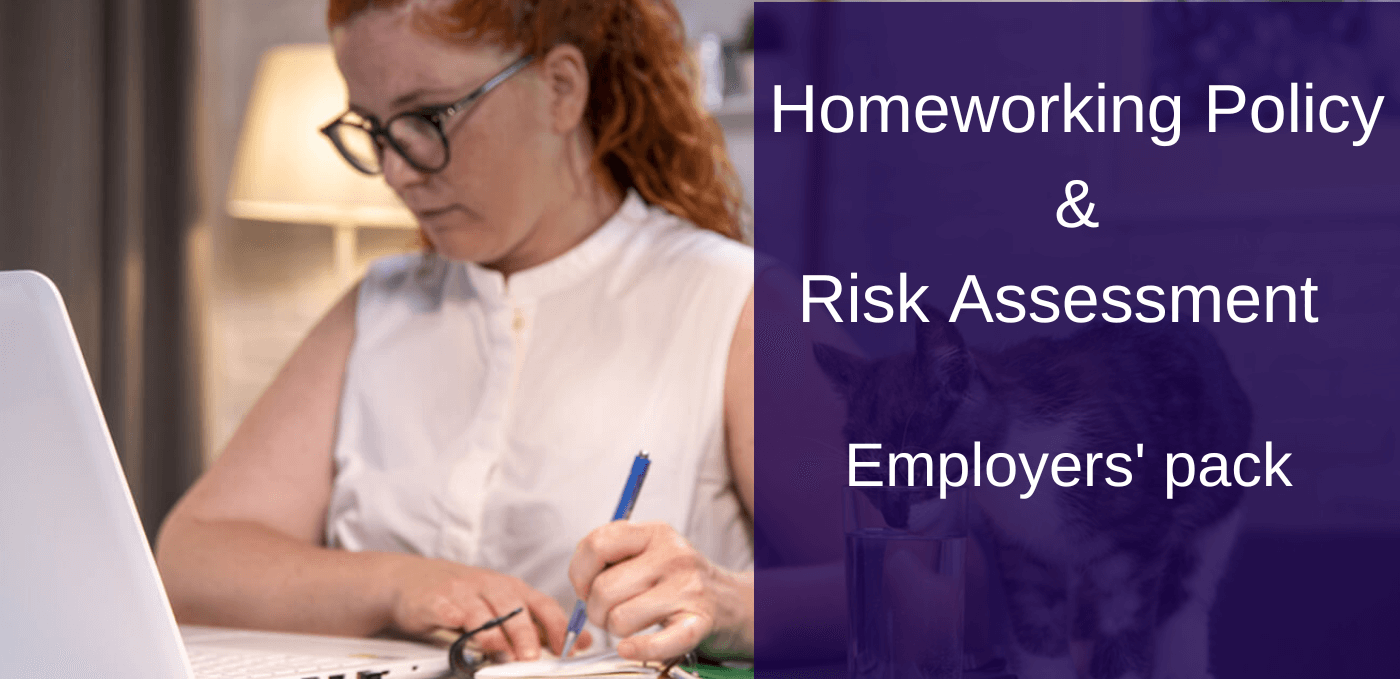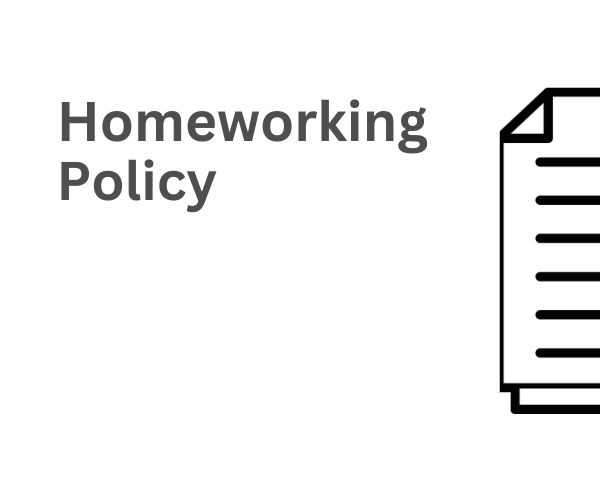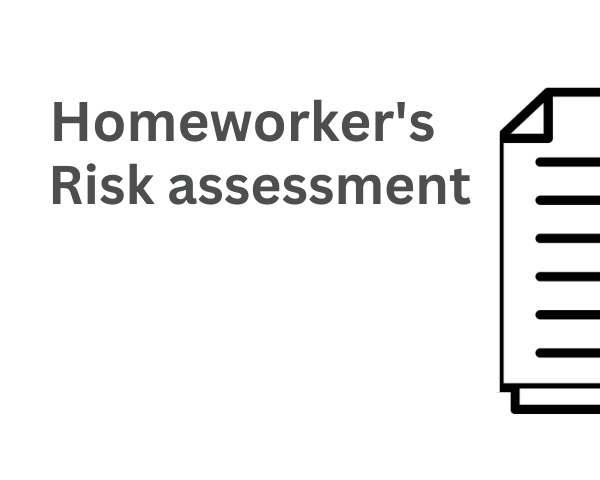On 6th April 2024, the day 1 right to request flexible working came into force. It represents a major shift in the approach to flexible working in the UK, reflecting demand and changing attitudes towards work life balance. Home working is part of flexible working, which is a broad term covering both when and where employees work . This home working pack keeps you ready and compliant when planning for and implementing home working specifically. It helps you review and update your policies and practices easily, allowing your staff to work from home as efficiently as possible, as cyber safely as possible, and ensuring the business remains compliant with health & safety and contractual obligations.
This article contains:
- A Home working policy to add to your staff handbook and issue to your teams.
- A Risk Assessment which can be completed by the employee and includes questions assessing technology, data security & confidentiality and additional information for higher risk cases, for example expectant mothers. Carrying out initial and periodic risk assessments for home working fits well into this the comprehensive plan
- A list of useful sites and up to date resources. There is a wealth of information online covering every aspect of home working. At the bottom of this article are listed well known and up to date sites.
These documents can be incorporated into your hybrid working policies. There are now many reasons why an employer and an employee may agree home working – hybrid working – arrangements. It is important to explain what is expected during home working and ensure the worker and manager are clear how the new home working arrangement will work. We recommend writing to the worker to set out the changes to the employment contract and the new home working policy and ask the worker to agree to the changes so there is a clear record of the agreed changes.
Explain the change in working arrangements to employees and confirm in writing
In a new era of more flexible working arrangements, there are now many reasons why an employer and employee may agree on home working . It is important to explain to what is expected during home working and ensure employee and line manager are both clear on how the new home working arrangement will work. We recommend writing to the employee to set out the changes to the employment contract and the new home working policy and ask the them to agree to the changes, so there is a clear record of the agreed changes
Below are elements you need to consider, and we suggest cover, in a letter to your home workers. Include the home working policy and risk assessment that you can download here and amend when you send the letter. Employers should remember to give themselves the flexibility to require workers on notice to return back to working in the office.
The letter represents a change to the worker’s contract so needs to be customised for the relevant home worker. Get in touch if you need more advice and guidance on getting this right for your particular situation, or if you need a template letter to start from.
Why is it so important to issue a formal letter ?
Employers have a legal duty to protect the health, safety and welfare of their employees, including those who work from home, under the Health & Safety at Work etc. Act 1974: As part of these duties:
- Employers are required to carry out a risk assessment to identify hazards and take steps to remove these. This risk assessment can be done by the employee and submitted to the employer for review.
- Employers must keep a record of the findings of the risk assessment and keep the risks under review.
- Employers are responsible for any equipment they provide to be safe and suitable, and must provide appropriate eye tests, on request.
- New and expectant mothers are owed a special duty of care under the Management of Health and Safety at Work Regulations.
- Employers should check they have appropriate insurance cover for homeworkers, including statutory employer’s liability insurance, and insurance covering any equipment or materials, and
- Treat employees fairly and consistently whether at work or home working.
Health & Safety Executive (HSE) guidance for employers on protecting home workers.
Home working policy
A Home working policy sets out the basis for working from home, the assessment criteria, the necessary arrangements and how home working will be managed going forward.
Contact us for help customising this template Homeworking policy for your particular situation.
Home worker’s risk assessment
This risk assessment should be sent with the letter and home working policy to the homeworker. It can be completed by the homeworker and includes questions assessing technology, data security & confidentiality and additional information for higher risk cases for example expectant mothers. It also includes a critically important final question so easily missed by employers.
Setting up effective home working
The Health & Safety Executive have produced a working from home toolbox and video here and a display screen equipment (DSE) checklist here
Systems and data security for home workers
Protecting data security and data confidentiality in a home working setting.
Businesses still have a legal responsibility to ensure that they have sufficient data security and data protection practices in place for home working as well as health and safety considerations for employees. There are increased risks from:
– malware attacks
– data breaches
– use of down devices, and
– adoption of new technology which has been poorly implemented, secured or assessed may arise
Employers are responsible for data security and protection of personal information. This remains the case when any member of your workforce is home working.
Employees must try to maintain the same standards of data confidentiality and security at home as they would normally do in the office.
Phishing attacks sky rocketed during the pandemic and continue to be a problem with significant numbers targeted at home workers. (At the height of the lockdown Google was blocking 18 million coronavirus scam emails every day). Do warn and train your staff to avoid a disruptive security breach and IT misuse from these attacks.
Employers may want to think about:
- Putting an ‘IT and Systems in Home working’ Policy in place to manage your remote team and keep your data secure.
- Asking your employees to complete a working from home assessment Offering employees (including those furloughed) online training or webinars on data security and confidentiality while working from home
- Reviewing access to internal systems, security of employees own devices and updated anti-malware and virus protection across all devices.
For more information and advice on data security and confidentiality, and what to do once your risk assessments are in, contact Karen Heaton at www.dpo4buiness.co.uk who works closely with The Legal Partners when we advise clients on these issues.
Practical reminders when home working to share with your staff
Some important reminders to keep in mind and review from time to time with all existing staff and new joiners who are working from home.
Define your space – have a dedicated area for work, however small, to separate work life from home life. Ideally in a separate area, but otherwise any quiet area.
Working from home equipment – it is important to keep in regular discussions regarding employee’s working from home equipment (ie making sure laptops, monitors and headphones are functional and up to date), in order to ensure that all employees are equipped to manage their workload from home.
Sitting correctly – in an ideal situation, every employee should have a fit-for-purpose work chair and desk as well as desk equipment set up professionally. Make sure you have checked in with your team on these elements.
Working in natural light, sitting with correct posture in the best chair possible, ensuring laptop screens are positioned at eye height and using external keyboard & mouse wherever possible, are all important elements to get right. Check in with your teams on these aspects.
Take regular short breaks – when working alone, its all to easy to get pulled into the screen in front of you for hours on end. Every 20 minutes, look up, stretch, walk about, reach out to a colleague, open a window and get some fresh air. Make time to eat lunch properly.
Establish a routine – establishing some familiarity can help people stay productive and to feel in control, happier at work. Set regular hours and stick to the schedule.
Plan the day – set a plan for each day and where possible stick to it.
Employers increasingly expect line managers to take responsibility for their team’s health and wellbeing. Be mindful that more junior line managers may well need some coaching in how to do this for their teams.
Some firms have created ‘wellbeing platforms’; breaking areas down into mental wellbeing, physical wellbeing, thought leadership and combining childcare with homeworking, inviting staff to contribute.
Training & upskilling. Remember when Microsoft Excel topped the list of online training courses taken during the pandemic. Continuing training programs, and promotions, when staff are homeworking is good for morale, and for moving forward.
Below are comprehensive resources, for people professionals and line managers on managing remote teams, enabling effective home working, and kicking off discussions around hybrid and flexible working arrangements.
Additional homeworking resources
- CIPD’s supporting hybrid working guide provides helpful advice for line managers on supporting and enabling hybrid working.
Hybrid working: Checklist for managers is a guide for managers wanting to start discussions about hybrid working and agree flexible working arrangements.








